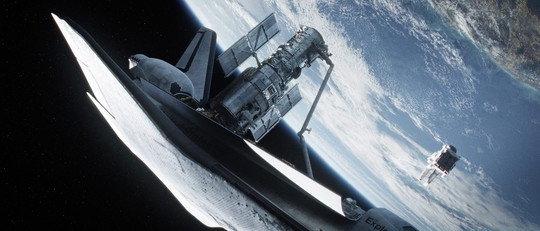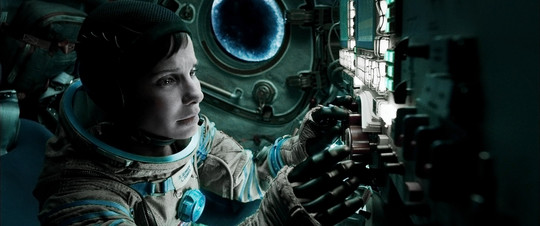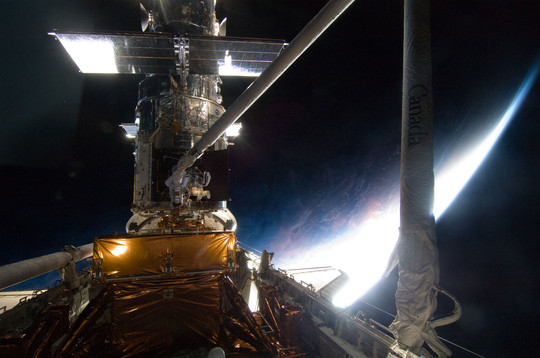Gravity
posted in Media by Cargo Cult on Sunday October 6 2013
SPOILER WARNING: this article indirectly mentions major plot points in the film!
Alfonso Cuarón may not realise it, but he's a director of video game movies. But he's definitely no Uwe Boll.

As his Children of Men was the perfect film adaptation of Valve's Half-Life 2, effortlessly capturing its underlying world and themes, Cuarón's new Gravity is the perfect film adaptation of ... Kerbal Space Program. It somehow captures the grand-scale engineering, splendid vistas, the impossible rescues and the get-out-and-push attitudes present in the game. Oh, and the ever-present risk of everything going kerbal, this time helped along by the suitably named Kessler syndrome...
A surprisingly small and intimate film, the impossibly massive visual design of disaster, void and engineering is somehow dwarfed by a single character - whose redemption is the very heart of the story. For all the expectations of it being a turgid, deadly serious semi-documentary about real-world spaceflight, it's a remarkably quirky, human and, in places, really funny film.
Go see it in 3D. Go see it for Cuarón's trademark impossibly-long-takes combined with absolutely cutting-edge CGI and aggressively perfect sound design - the first few minutes of the film are entirely silent, the first time I've ever heard a typically noisy American cinema audience almost perfectly noiseless. In space, no-one can hear you scream - and Houston ain't listening either.
At a guess, roughly 95% of the film is CGI. It's mostly a big long computer animation with bits of some actors occasionally composited into the scene. But you can't tell.

Readers may have noticed that I'm something of a space nut. So one of my biggest questions going into the film was how accurate was it going to be. The answer? If you consider it to be taking place in a parallel universe, with a manned space program similar (but by no means identical) to our own, then it's quite accurate to whatever their space program might involve. Commentators have pointed out the impossibility of an easy orbital transfer between our Hubble Space Telescope and the International Space Station, but in a universe where Space Shuttle Explorer is capable of orbital flight, Soyuz has an extra escape hatch, Sokol space suits have detachable helmets, umbilicals and flexibility in vacuum, and Tiangong is bloody enormous - perhaps they launched such craft into near-identical orbits? I was half-expecting this to be lampshaded with a line about it making rescue much easier should a shuttle be damaged.
There are plenty of deviations from 'real' spaceflight. But it was quite obvious the necessary homework had been done, and facts carefully tweaked to better suit the story. Yes, there were a few instances of orbital mechanics don't work that way, but in a way, the film isn't about spaceflight. The plot is small, but the film is only 91 minutes long - perhaps intentionally close to the orbital period of the International Space Station.
I have this strange sensation of it being an understated, beautiful little art-house tale about loss and recovery, impossibly given life through the most terrifyingly vast engineering and vistas imaginable. I suppose it's no coincidence that this monster has a tiny, arty sibling.
I need to see Gravity again. Before I'm tempted to recreate the whole thing in KSP...
Article is now closed for commenting.


























1. I miss sunday things
Posted by Sunday things lover at 7:11AM, Sunday October 27 2013
And I'm lost without it